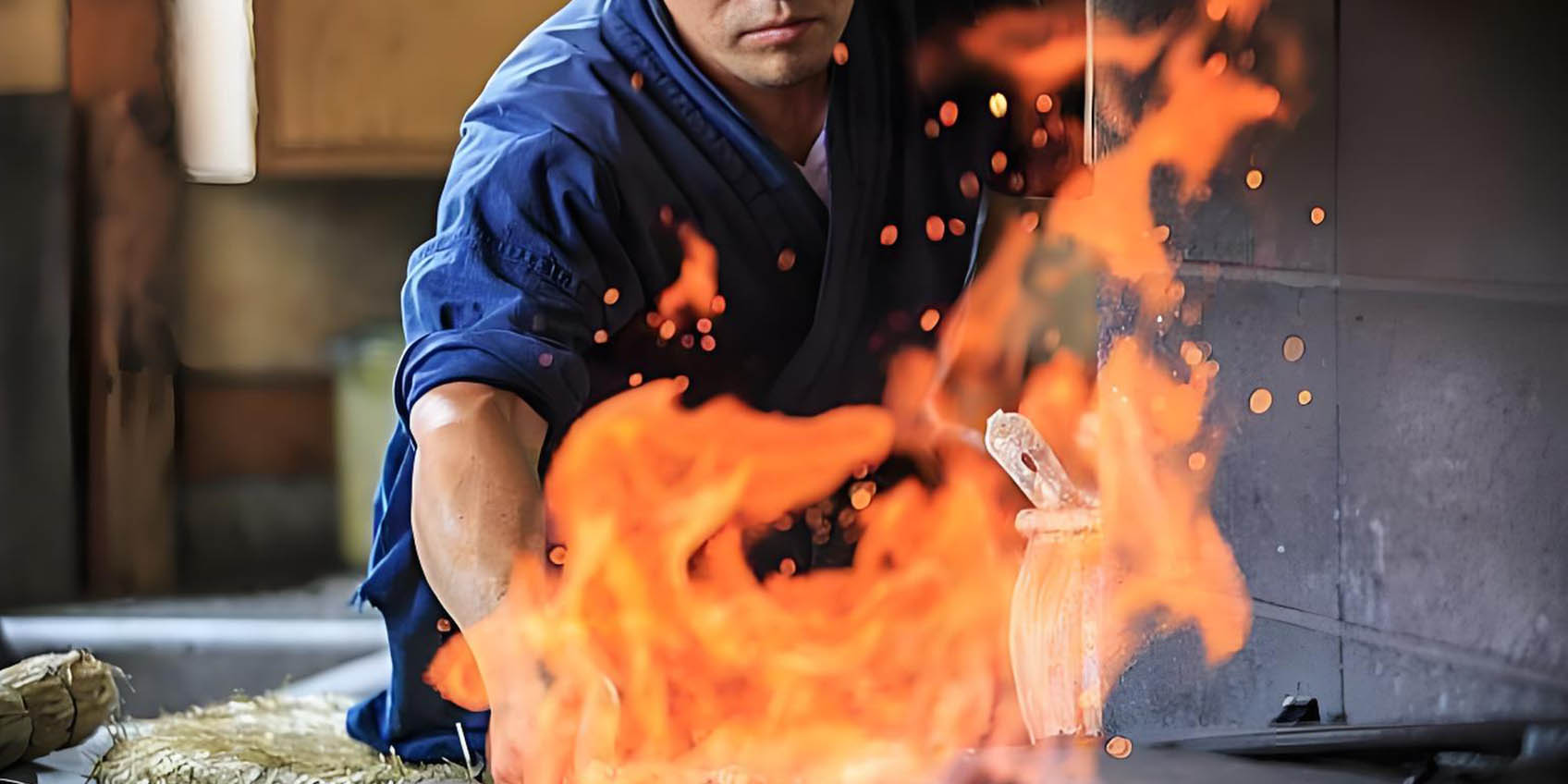Forging Japanese Swords: Blending Craftsmanship and Tradition

how to hand forge a samurai sword
The previous article provided a detailed description of the material preparation process in Japanese sword making, while this article continues to explore the subsequent stages of the manufacturing process.
Detailed Explanation of Japanese Sword Making Process
Sunobe (Forging the Blade)
Japanese sword making begins with the sunobe stage, where the smith heats and repeatedly hammers and folds the iron ingot to gradually form a long, narrow blade shape. This process requires not only exquisite craftsmanship but also relies on the smith's experience and intuition to adjust the thickness and shape of the blade, ensuring smooth progression to the next stages.

Yakiire (Clay Tempering)
Yakiire is a crucial step in Japanese sword making. The smith first prepares yakibatsuchi, a mixture of clay, charcoal powder, and grinding stone powder, which is applied to the blade surface. Through precise heating and rapid cooling, the blade achieves the desired hardness and sharpness, while distinctive patterns and a granular structure known as nie develop along the cutting edge, marking a hallmark of quality in Japanese swords.
Finishing Processes
After yakiire, the blade enters the finishing stages. The smith meticulously inspects and refines the blade, removing any imperfections and adjusting its overall shape and curvature. This phase demands high precision and meticulous craftsmanship to ensure the blade's final appearance and quality meet standards.

Forge Pressing
During forge pressing, the smith performs rough shaping and surface treatments. This further refines the blade's shape and sets the foundation for detailed finishing and decoration work. The smith conducts thorough inspections at this stage to verify that every detail meets design specifications and production standards.
Nakago Processing
The nakago, or tang, is a critical part of the sword used for mounting the handle. Here, the smith adjusts and processes the tang's shape, creating holes for securing the handle pins and often carving specific patterns (yasurime) onto its surface. These patterns not only enhance the sword's aesthetics but also aid in rust prevention and maintenance.

Inscription
Lastly, inscription marks the final step in sword making. The smith engraves their name, the production date, and sometimes a serial number onto the tang. These inscriptions not only identify the smith and date of manufacture but also serve as crucial references for future authentication and historical documentation.
Through these meticulous crafting processes, katana not only achieve exceptional blade quality and hardness but also embody profound cultural and artisanal value.
Conclusion
With the advancement of modern culture and personalized demands for customize , the design of katana has become increasingly diverse and personalized. Traditional craftsmen preserve classic designs while integrating modern elements and personalized requirements. Advances in modern manufacturing technology and global influences have introduced a rich variety of materials for katana production, expanding beyond traditional tamahagane to include stainless steel, high-carbon steel, and even alloy materials. These new materials enhance blade durability, cutting performance, and provide craftsmen with greater creative possibilities to meet diverse user needs and aesthetic preferences.

This trend towards diversity and personalization reflects not only technological advancements but also respects for traditional craftsmanship and the pursuit of personalized demands. Whether traditional Japanese-style katana or innovative modern designs, each sword represents the dedication and craftsmanship of its maker, embodying a perfect blend of cultural heritage and artistic expression.
Our shop offers a wide range of customized services
At some events, fans demonstrate their swordsmanship skills, paying tribute to anime's legendary battles. Conventions even hold swordsmanship competitions, letting enthusiasts showcase their passion and creativity with these iconic weapons. Certain anime weapons hold special significance for fans, influencing anime swordsmanship and sparking interest in related merchandise. Celebrations at various anime events further boost their popularity. These weapons symbolize strength and courage, leaving a lasting mark on the anime world.

